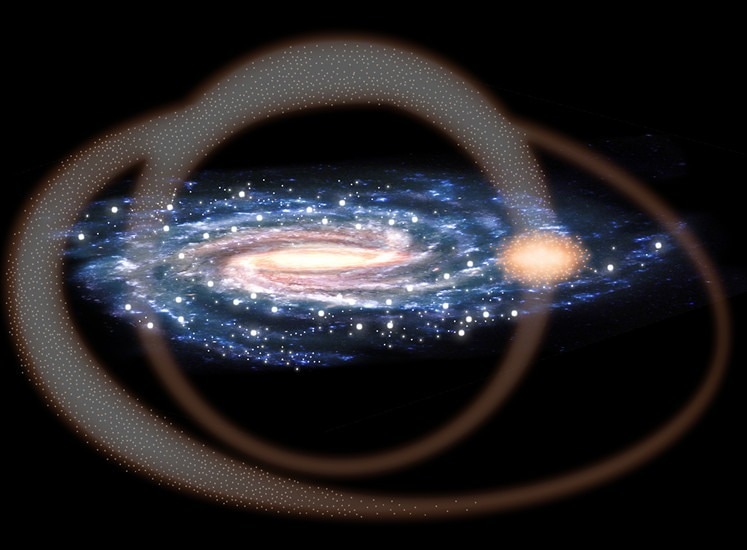Reviewed by Mila PereraSep 12 2022
Maser emissions, sometimes known as “cosmic lasers,” are created by amplifying stimulated emissions in the interstellar and circumstellar medium. For the kinematic research of the Milky Way, bright and small maser sources are suitable targets for high-accuracy astrometry.
 Artist's impression of the Sagittarius Stream. Image Credit: ESA
Artist's impression of the Sagittarius Stream. Image Credit: ESA
A research group from the National Time Service Center (NTSC) of the Chinese Academy of Sciences carried out a 22 GHz water maser survey towards the O-rich asymptotic giant branch (AGB) stars in the Sagittarius stellar stream. Using the Nobeyama 45-m and Tidbinbilla DSS-43 70-m telescopes, around 21 maser emissions were discovered, of which 20 were initially detected.
On September 9th, 2022, the outcome was released in Monthly Notices of the Royal Astronomical Society.
The Milky Way’s most noticeable stellar stream, the Sagittarius Stellar Stream, is created when our galaxy and its satellite dwarf galaxy, the Sagittarius Dwarf Spheroidal Galaxy, combine through accretion.
Investigation of this stream could help scientists to probe the galactic evolution and dark matter distribution.
Yuanwei Wu, Study Team Leader and Professor, National Time Service Center, Chinese Academy of Sciences
In their analysis of the Galactic distributions of H2O and SiO maser-traced AGBs in the Sagittarius orbital plane, the researchers discovered an elongated structure pointing (l, b) in the direction of ~(340 °, 40 °).
They further investigated the 3D movements of these sources to confirm the link between masers and the Sagittarius tidal stream. The findings suggested that these sources are still part of the Milky Way’s thick disc and are moving away from the galactic center at a fantastic pace of about 50 km s-1.
“There must exist maser emissions in the Sagittarius stream. The reason why we still cannot confirm masers within the Sagittarius stream is the limitation of sensitivity of our survey and sample bias. We’ll try more samples in our future study,” said Prof. Wu.
Journal Reference:
Wu, Y., et al. (2022) Water-maser survey towards off-plane O-rich AGBs around the orbital plane of the Sagittarius stellar stream. Monthly Notices of the Royal Astronomical Society. doi.org/10.1093/mnras/stac1971.